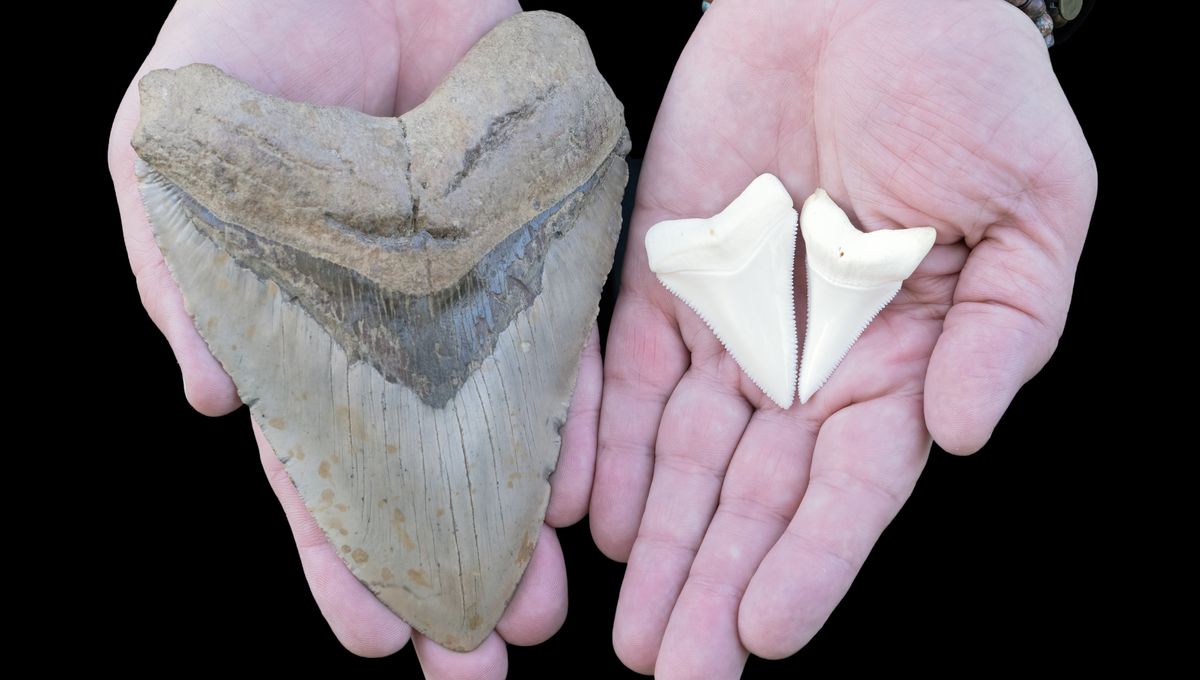
Most people have probably heard of megalodon by now, given its arrival as a sea beastie on the silver screen in recent years. It was an enormous primeval predator that grew to sizes that make even the largest great white sharks look like pathetic minnows. But despite having gone extinct around 1.6 million years ago, there are still some who believe the monstrous shark could still be out there among the waves.
What happened to this monster?
Megalodon (Otodus megalodon) is regarded as both the largest shark and the largest marine predator to have ever lived. The leviathan roamed throughout the world’s seas from around 20 million years ago until the Pleistocene era, when it went extinct. There are several reasons why this happened, but one of the main factors appears to be that it was outcompeted by other sharks, such as great whites, who hunted for the same prey.
This might strike us as unlikely, given how huge the megalodon was in comparison to other marine predators, but, at the time, the world was experiencing a significant cooling. Scientists believe a third of all marine animals, including 43 percent of turtles and 35 percent of sea birds, went extinct at this time as the number of staple organisms at the lower parts of the food chain plummeted. This would have significantly impacted predators at the top of the chain, especially megalodon – the apex killer of its day.
New research has shown that megalodon was likely a warm-blooded animal, which meant it would have had to consume significantly larger amounts of prey to sustain its metabolism, and there simply was not enough to go around. In addition, megalodons likely gave birth to live young, and it is believed these pups would have used shallow coastal waters as a nursery to protect them from other predators. The ambient global cooling would have led to ice forming at the poles, which would have lowered sea levels, making it increasingly difficult for the sharks to access these pupping grounds.
Is it still “out there”?
The answer is quite straightforward – no. It is practically impossible for a creature of megalodon’s size to still be out there, alive and flopping, without leaving any evidence for its existence. And there really is not any evidence for it, despite some of the stuff circulating online.
The idea that this gigantic killer could still be alive was made popular by the 2013 Discovery Channel “documentary” that explored megalodon’s potential return. The documentary received a lot of criticism at the time for spreading misinformation. Although it was actually a fake story – indicated by the briefest of disclaimers at the start of the program – it caught the imaginations of plenty of people who now believed the shark was still alive.
In fact, the show was a hit and became the top performing program in the history of Shark Week. After this, Discovery Channel produced follow up programs purportedly looking at the “new evidence” (spoiler, there was none) to keep the fiction fresh in viewers’ minds. They even did a weird naval-gazing episode in 2018 where they fact-checked themselves in a way that held up their hands and effectively said “yes, we were talking rubbish, but look what we learned about extinct and living sharks in the process”.
These shows were all performed tongue-in-cheek are entirely for entertainment purposes, and their format is cleverly done in a way that makes the fiction seem real, but unfortunately this has only bolstered the myth that the shark still lives.
But what evidence is there meant to be outside of these stories? Again, there is nothing.
In 2014, headlines across the world picked up the story of a 3-meter (9-foot) great white shark that had allegedly been munched on by an unknown giant creature in the sea. Although the media were quick to speculate over what type of creature could possibly eat such a large animal, adding fuel to the megalodon-mania, the reality was that the unfortunate shark was the meal of a bigger great white shark. As with so many online stories, what was presented as a “mystery” was no mystery at all.
In addition, spurious photos of enormous shark-like shapes in the water that are meant to be megalodons are often fake or simply existing sharks that just happen to be large – like basking sharks.
Finally, with the popularity of the film The Meg in 2018, believers in megalodon have held onto the view that the shark is still lurking in the deepest parts of the world’s oceans, especially within the Mariana Trench.
Like any good monster story, the monster exists on the fringes of the known, and the world’s oceans still hold plenty of unknowns today. Yes, it is true that scientists are constantly finding new species of deep-sea creatures, and yes, it is possible that large ocean predators have still evaded discovery, but this does not mean megalodon is among them.
For one thing, the shark’s own physiology would make it impossible for it find enough food at the bottom of the sea to sustain it. Secondly, its presence within the existing food chain, as an apex predator, would be utterly uncontestable.
It may be fun to imagine our seas filled with mysterious and monstrous creatures, but the reality is that even the species we do know of are dwindling in numbers from human activity, especially overfishing, trophy hunting, and climate change. Megalodon was an incredible marine animal, but we should be more worried about losing the ones we have today.
[H/T: LiveScience]
Source Link: Could Megalodon Still Be Out There In The Deep Ocean?